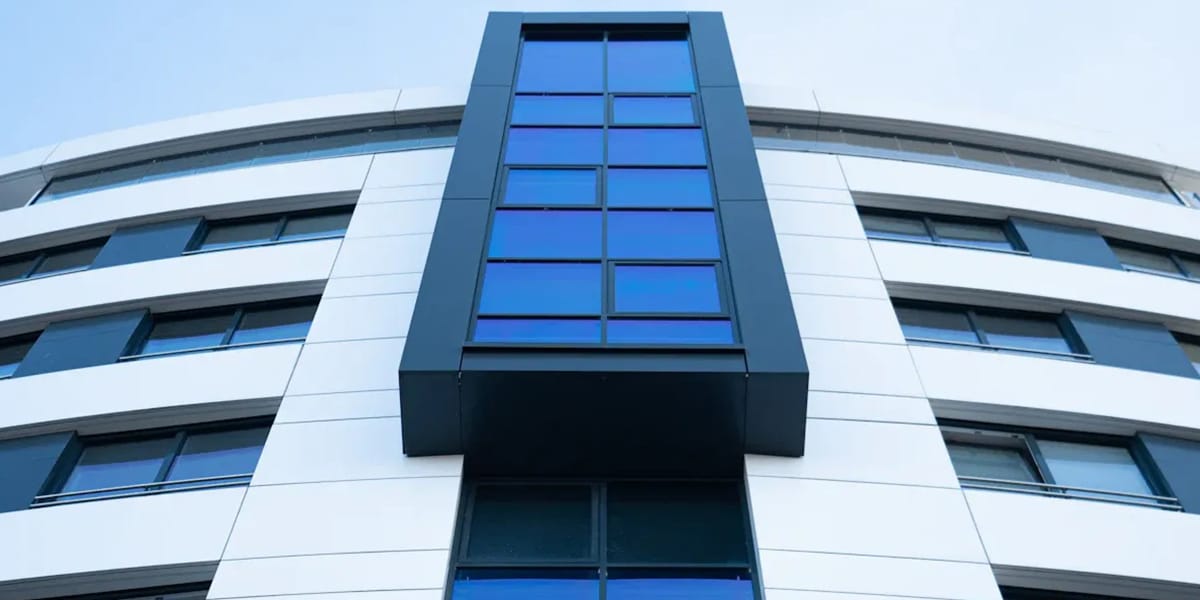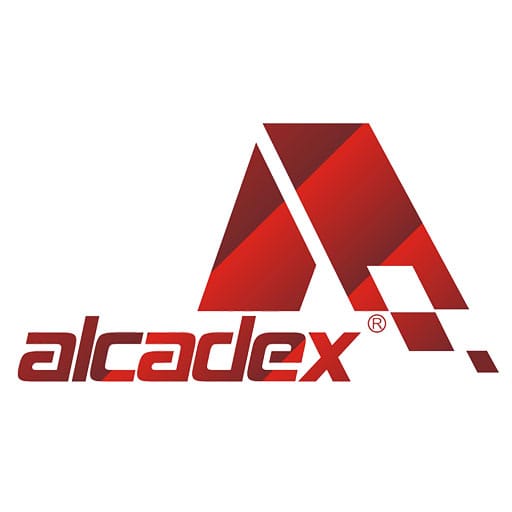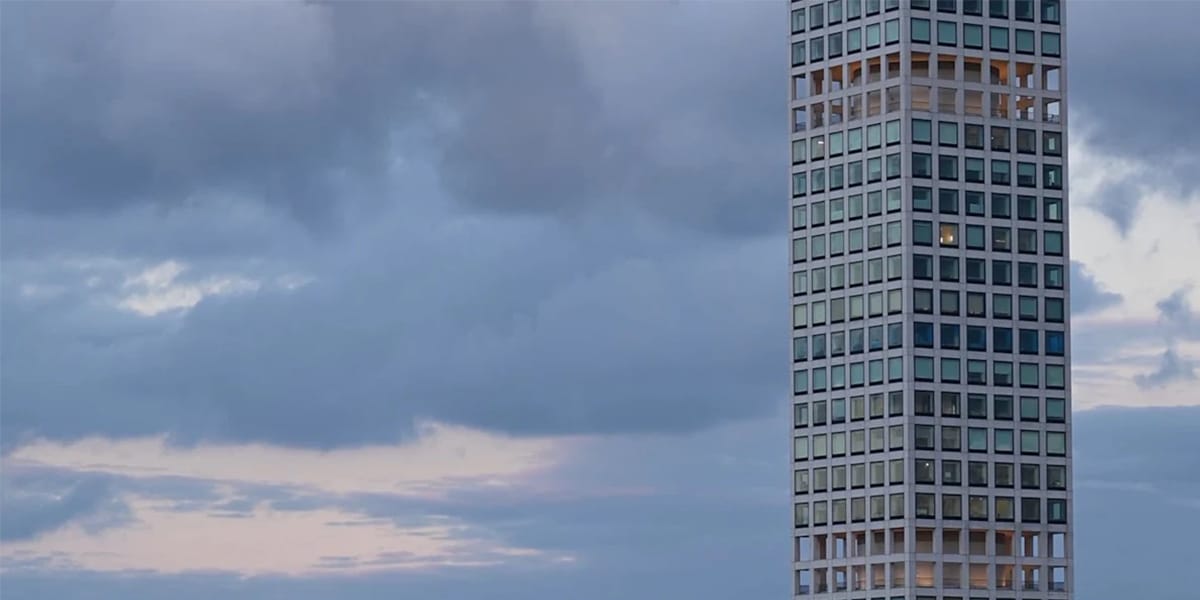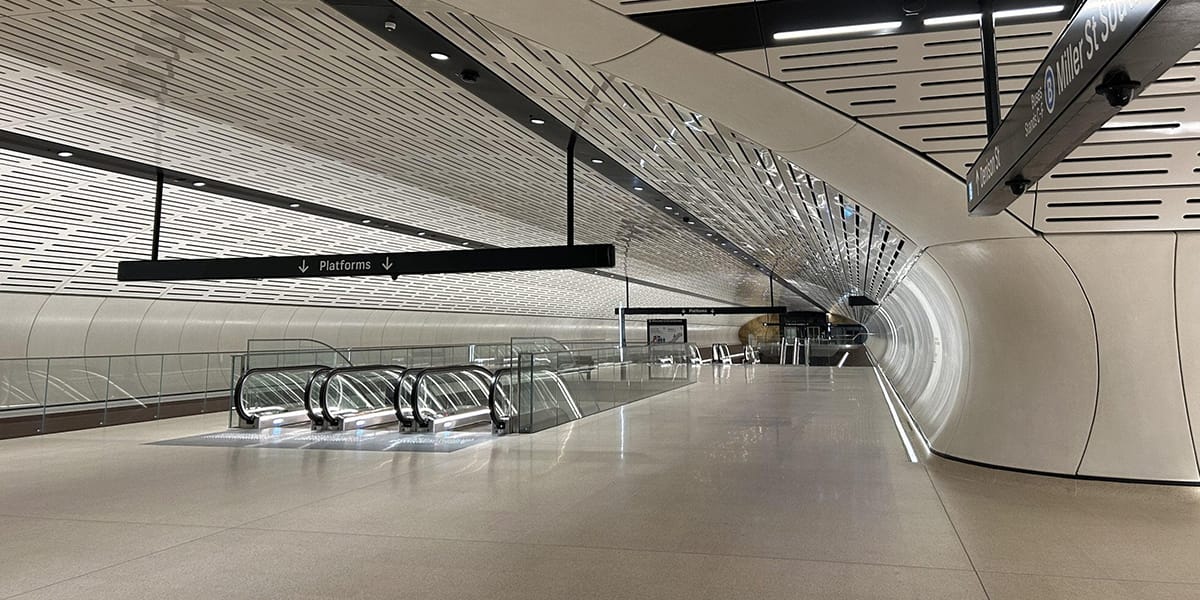
12 Aug Real Stories of Aluminium Composite Panel Cladding in Modern Architecture
Table of Contents
Real-life examples help people see how aluminium composite panel cladding changes buildings today. Many places around the world want acp solutions, as shown here:
Metric / Region | Statistic / Projection | Year / Period |
|---|---|---|
ACP segment market share | By 2037 | |
Asia-Pacific revenue share | 34.8% (36.9% by 2037) | 2024 / 2037 |
U.S. ACP market share (North America) | > 69.34% | 2025 |
Stories from real projects show how acp helps make cladding better for the environment. It also helps save energy and works well in different weather. Projects in different areas show why it is important to pick eco-friendly options in new buildings. Using acp in cladding gives both useful and green benefits. This makes it very important in building designs that care about the planet.
Key Takeaways
Aluminium composite panels (ACP) make buildings strong and light. They are easy to use when building. This saves time and money. ACP helps keep buildings warm in winter. It also keeps them cool in summer. This lowers how much energy people use and saves money. These panels come in many colors and styles. Architects can make unique and modern designs with them. ACP is safe and does not catch fire easily. It lasts a long time without rust or weather damage. Using ACP helps green building. It saves energy, makes less waste, and can be recycled.
Aluminium Composite Panel Cladding in Practice
Modern Applications
Aluminium composite panel cladding is very important in new buildings. Architects and builders use acp in many places. These places include Northern Iraq, India, the United States, and cities in Asia-Pacific. The panels change how buildings look and work. They are used on tall office buildings, homes, and public places.
ACPs cover the outside of buildings. This gives them a smooth and modern look. The Wave in Holland and the Empire State Building both use acp. These panels help make the buildings strong and bold.
Inside, acp is also helpful. Designers use these panels for walls, fake ceilings, and decorations. This makes rooms look nice and last longer.
ACPs are good for signs and company logos. They last a long time outside because they do not get damaged by weather.
Big city projects like airports and train stations use acp. It helps with both how things work and how they look.
ACPs come in many colors, textures, and finishes. This lets architects be creative and make each building special.
Why Choose ACP Cladding
Architects and builders pick aluminium composite panel cladding for many reasons. This cladding has special benefits over other materials.
ACPs are light but strong. This makes them easy to put up and does not make buildings heavy.
They last a long time. ACPs do not rust or get damaged by weather or pollution. This means less fixing and longer use.
Some ACPs do not catch fire easily. This helps buildings follow safety rules, especially tall ones.
ACPs keep buildings warm or cool. Their layers help save energy by keeping inside temperatures steady.
ACPs can be shaped in many ways and have modern looks. This makes them popular for new building designs.
ACPs save money. They need less fixing and help lower energy bills.
Many ACPs can be recycled. This helps builders who want to protect the environment.
ACPs work well in tough weather. They protect buildings in wet, rainy, or seaside places.
Material | Insulation | Design Flexibility | Maintenance | Cost-Effectiveness | |
|---|---|---|---|---|---|
ACP | High | High | Excellent | Low | High |
Wood | Medium | Medium | Good | High | Medium |
Steel | High | Low | Limited | Medium | Medium |
Stone | High | High | Limited | High | Low |
In new buildings, aluminium composite panel cladding gives strength, saves energy, and looks good. Builders and architects keep choosing acp because it works well in many types of projects.
Commercial Projects
 Office and Retail Buildings
Office and Retail Buildings
Many commercial buildings use acp to make spaces look modern and useful. These projects show how aluminium composite panel cladding changes office and store buildings.
Lotus Paradise Mall in India is a great example. The mall uses acp on the outside. The panels are strong and easy to care for. They come in many designs. The mall’s outside has bright colors and smooth surfaces. This makes it easy to spot in the city.
In India, tall office buildings often use VIVA’s fire-resistant acp sheets. These panels follow strict fire safety rules. Builders like them because they come in many colors and finishes. This helps make each building look different.
ALUCOBOND® panels are used in cities all over the world. Architects use these panels to make curved or slanted parts. This gives buildings a bold look.
Acp in commercial buildings helps with both design and function. Architects pick acp because it is light. This makes it faster to put up and does not make buildings heavy. The panels are good for showing off brands. Stores can add their logos and colors to the panels. This helps them get noticed in busy cities.
Inside offices, acp brings color and texture to walls and decorations. This makes work spaces nicer and lets designers be creative. The panels do not get damaged by weather. This keeps buildings looking good, even in tough places.
Performance and Outcomes
Acp does more than just look nice on buildings. The panels help save energy and make buildings comfortable. Aluminium composite panel cladding keeps heat out in summer and keeps warmth in during winter. This means buildings use less heating and cooling. It saves money and helps the planet.
Acp panels also keep out noise. This makes offices and stores quieter and better for people. This is important in busy cities with lots of noise.
Acp lasts a long time. The panels do not get ruined by weather, dirt, or bumps. This means less fixing and fewer new panels needed. In busy places, this saves money and cuts down on waste. Aluminium composite panel cladding is also good for the environment. The panels use recycled materials and can be recycled again later.
Note: ACPs must follow strict fire safety rules, especially in tall or crowded buildings. Fire-resistant panels help stop fires from spreading fast and keep people safe. Builders and architects must pick the right acp and put it in the right way to keep everyone safe.
The cladding system helps buildings meet green building rules. Studies show that insulated aluminium wall panels keep heat in as well as other top materials. Good sealing and waterproofing keep the panels working well for a long time. Some acp panels have shiny surfaces that bounce sunlight away. This helps save even more energy.
Residential and Public Buildings
Homes and Apartments
Aluminium composite panel cladding is a popular choice for new homes. Homeowners and builders like acp because it is strong and safe. The panels can handle bad weather, so they work in many places. Many homes in India, South Korea, and the UAE use acp on the outside. These panels look smooth and help protect homes from rain, sun, and pollution.
Key benefits of acp in homes include:
ACP lasts a long time and is good for the planet. It stays strong in tough weather and keeps its shape.
The panels do not burn or let water in easily. This makes homes safer and helps them last longer.
ACP is light, so it is easy to put up. This makes building faster and costs less money.
Builders can pick from many colors, shapes, and finishes. This helps match any home style.
ACP helps keep homes cool in summer and warm in winter. This saves energy and makes homes comfortable.
ACP does not need much care. Homeowners save time and money on cleaning and fixing.
ACP panels also help block noise from outside. This makes homes quieter and nicer to live in.
Institutional and Infrastructure Projects
Public buildings like hospitals, schools, and airports use acp cladding for how it works and looks. Hospitals use special anti-bacterial acp panels in operating rooms. This helps keep things clean and safe. Airports, like the one in Brasilia, use acp because it is strong and can handle lots of people. Schools and research centers like acp because it does not burn easily and keeps out noise. This makes these places safer and quieter.
Big projects can be hard because they are large and have tricky designs. ACP helps because it is light and can bend into different shapes. Some buildings use acp for curved walls or to add solar panels. For example, Southern Connecticut State University used acp to meet tough safety and insulation rules. Builders like acp because it does not catch fire, can take hits, and is easy to clean. These things make acp a good pick for public and school buildings.
ACP cladding lets architects try new ideas while still following safety and energy rules in today’s buildings.
Sustainability in Aluminium Composite Panel Cladding
 Sustainable Construction Benefits
Sustainable Construction Benefits
Aluminium composite panel cladding is important for green building. Builders and architects pick acp because it is good for the planet and works well. Using acp helps meet world goals for saving energy and building green. Many buildings use acp to save energy and last a long time.
ACP helps save energy by keeping heat in or out. This means less heating and cooling is needed, so less pollution happens.
The aluminium in acp can be used again and again. This means we do not need to dig up as much new metal or fill land with trash.
ACP is light and strong. This makes buildings lighter and shipping easier, which is better for the earth.
ACP does not rust, so it needs less fixing. This means less waste from broken parts.
ACP helps builders follow green building rules like LEED. Many people use acp to build in a way that is better for nature.
Now, more recycled materials and smart ideas are used in making acp. These new ways make acp even greener.
ACP can reflect sunlight with special coatings. This keeps buildings cooler and saves more energy.
ACP works with other green building tools, like solar panels and rainwater systems.
ACP lasts for 20 to 30 years. This means it does not need to be replaced often, which is good for the planet.
ACP is easy to care for and does not get dirty or moldy. This makes it a smart choice for green building.
ACP helps make green buildings by saving energy, being recyclable, and having a design that is good for the earth. These things help builders make buildings that are better for people and the planet.
Safety and Performance
Safety is very important in green building. ACP cladding follows tough safety rules and does not burn easily. The inside of acp panels has special stuff that stops fire. These things slow down fire and make less smoke.
Aspect | Description |
|---|---|
Core Material | |
Fire Ratings | Most acp panels pass B1 or Class A fire tests. |
Regulatory Standards | Panels follow rules like GB8624 for fire safety. |
Testing Methods | National labs check how acp handles fire. |
Flame Retardant Mechanism | Flame stoppers slow burning and make less smoke. |
Application Requirements | Tall and public buildings need strong fire safety. |
Ignition Properties | Polyethylene burns only at high heat, so it is safer. |
Makers use new fire-stopping layers and coatings to make acp safer. These things help acp pass world safety tests. ACP also stands up to sun, rain, and hot or cold weather. This keeps buildings safe and means less fixing and less waste.
ACP saves energy, can be recycled, and is made to help the earth. Builders like acp because it is safe, works well, and helps make green buildings everywhere.
Lessons and Best Practices
Key Takeaways
Aluminium composite panel cladding has changed how people build today. It is strong, flexible, and good for the earth. Many projects show that acp has many good points. But there are also some problems that builders and architects need to solve.
ACP does not rust or get ruined by weather. This makes it a good pick for homes and businesses.
ACP is light, so it is easy to put up. This helps save money and makes building faster.
ACP comes in many colors and styles. Architects can use it to make buildings look special.
ACP helps keep buildings warm or cool. It bounces sunlight away and keeps heat in or out. This saves energy and money.
ACP is safe for the planet and can be used again. This fits with green building rules.
But, there are some problems when using acp in real life:
If builders use the wrong anchors or weak fixings, panels can fall off.
Screws can come loose from shaking or moving. This can make panels drop.
Some builders use sticky tapes to hold panels. These tapes need to be put on right. Sometimes, they need extra screws to stay safe.
If people do not check and fix panels often, small problems can get worse. This can make more panels fall off.
Even small winds can shake light panels if the design is not right.
People often forget to check the outside of buildings. If no engineer looks at it, loose panels may not be found.
Some projects do not use engineers for the cladding. This can lead to weak connections and bad building work.
Note: Good engineering, clear plans, and regular checks help stop problems and keep acp working well for a long time.
Studies show that fire safety is very important for acp cladding. Scientists use computer models to see how these panels burn. These models help make buildings safer. They also help pick better materials and stop fires from spreading. This keeps people safe and helps the planet. ACP is now used more in building because it is safe and helps make green buildings.
Real stories from real buildings show how aluminium composite panel cladding helps green building.
ACP panels help save energy and cut down on waste. They also help use fewer resources.
These panels are light and strong. This lets architects design modern and green buildings.
Cities like Denver and Sydney use ACP in many ways. The panels work well for a long time.
New ideas in green materials and smart features keep making ACP better. Factories also use eco-friendly ways to make them.
By looking at these projects, builders learn how to make buildings better for the planet.
FAQ
What is aluminium composite panel (ACP) cladding?
Aluminium composite panel cladding uses flat panels made of two thin aluminum sheets with a plastic center. Builders use ACP to cover the outside and inside of buildings. ACP makes buildings strong, keeps them warm or cool, and gives them a modern style.
How long does ACP cladding last?
Most ACP cladding stays good for 20 to 30 years. The panels do not get ruined by weather, rust, or pollution. Cleaning and checking the panels often helps them look nice and work well.
Is ACP cladding safe for tall buildings?
Yes. Makers build ACP panels to follow tough fire safety rules. Fire-resistant centers and careful building help keep people safe in tall buildings. Always pick panels that are tested and approved for safety.
Can ACP panels be recycled?
Yes. ACP panels have aluminum, and this metal can be used again. Many companies use old materials to make new panels. Recycling cuts down on trash and helps green building.
What design options do ACP panels offer?
ACP panels come in many colors, patterns, and finishes. Architects can pick shiny, flat, wood, or stone styles. Special shapes and sizes let them make creative building designs.



 Office and Retail Buildings
Office and Retail Buildings Sustainable Construction Benefits
Sustainable Construction Benefits